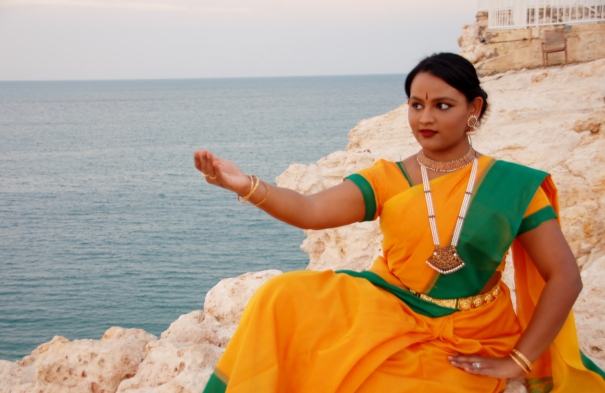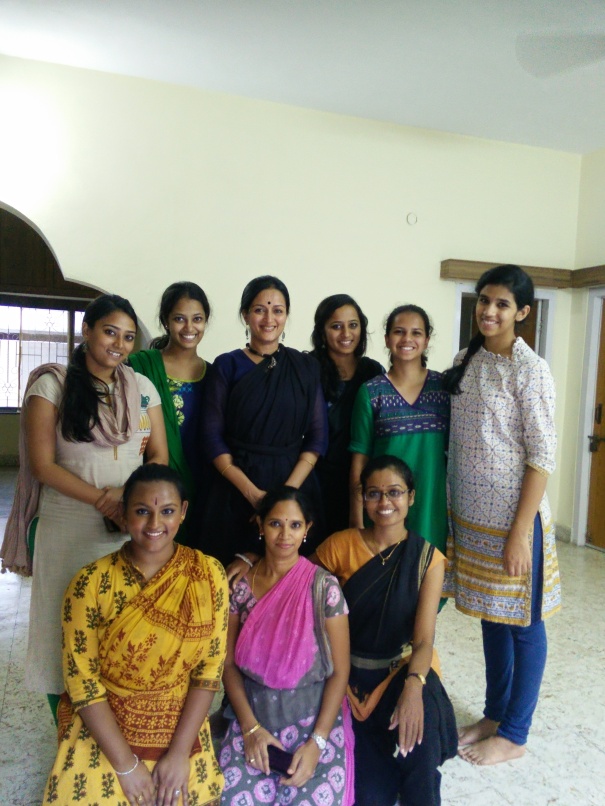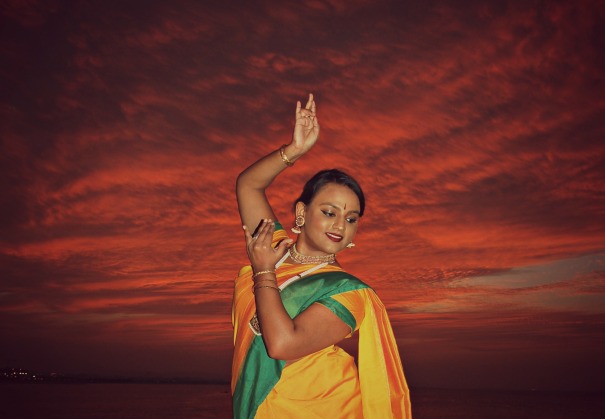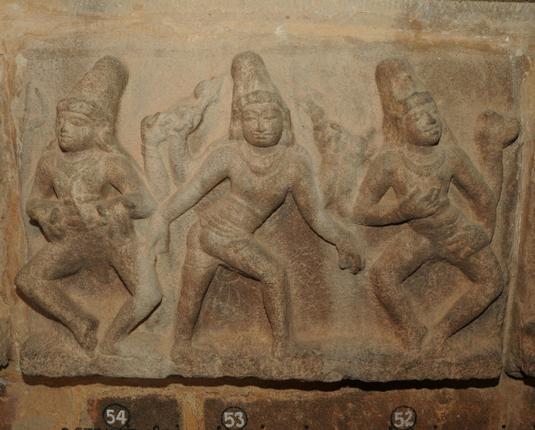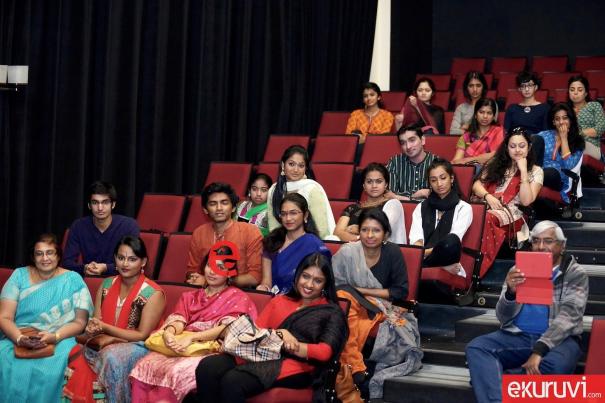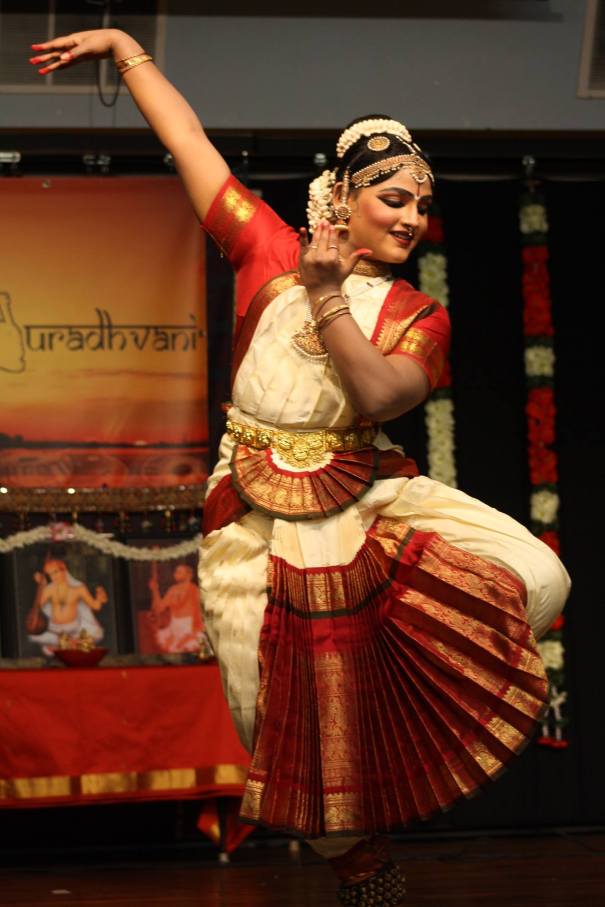I know it has been a while, but academic pressures kept me occupied for the last 8 months. Nevertheless I’m back with renewed energy, and right in time for the North American “Kutcheri” season! I am back with a very exciting interview I had with a talented Kathak dancer from Pune, India! I was very excited to meet Nayantara Parpia in my hometown of Mississauga during her vacation. It is so lovely to meet people who hold their love for classical dance as close to their hearts as I do.
I know I teased a few questions on the Facebook live interview we did over coffee at the Gaanavarshini space, so without further ado here is the rest!
What interested you in Kathak? How old were you when you started?
Like many others, it was my mother who always wanted to learn Kathak and ended up encouraging me to start at the age of 8. However at first the strict method of teaching made it difficult to really love it at that young age. I really came to love the art form with a mind to pursue it seriously at the age of 16.
Do you think that the Indian government is taking good strides to encourage classical dance?
Well, there is certainly more that can be done! In New Delhi, there are these government funded festivals which means that they are completely free for people to attend. There are packed audiences for top-notch artists. It’s a wonderful experience!
However, art needs to be made a priority. But how can the government alone make it one? Corporates need to support art as well. There can be a mutually beneficial relationship achieved with more corporations supporting the arts. And not just for funding performances – we need spaces to practice and grow ourselves artistically.
What would you like to see improve in the world of classical dance?
(She had a look of “where do I start” before answering this question—us classical dancers always practice abhinaya in our daily lives)
First thing that comes to mind – festivals promoting solo dancers. But most importantly, to extend the time slot to more than 30 minutes. Classical dance has a certain set up, and with respect to Kathak each composition we present has a purpose which builds on each item. What can we really do in 30 minutes? It definitely not as bad as being asked to perform for 10 minutes though…Another thing would be discouraging the idea that artists pay to be a part of the festival. We have dedicated so many years to learning the art, it just does not sit right with me.
Secondly, people need to be encouraged to hone their own skills. It would be really interesting to see teacher-training modules in the future of classical dance. Right now we have the traditional way of waiting until our Guru recommends us to start helping teach their classes. But if you have been trained until then to be a performer—well, being a performer and being a teacher are two different things. I’m not looking to see only cookie-cutter teachers in the future, but what I have seen while being a teacher is that it requires a lot of communication and patience. It would be similar to professional development workshops in the corporate field if we have access to teacher training for classical dance.
I noticed on your Instagram that you place an importance on fitness. Could you speak to that a bit?
From a young age my family always motivated me to live an active lifestyle. I’ve come to see that to have the best stage look I must have a balance of Cardio, Strength training and Flexibility. Yoga is very important for me to achieve balance within myself as well as flexibility. I also train with weights but in a way to work out “lean.” A holistic approach will make fitness about more than just the dancing, but also about the stamina you have.
What are your views on collaboration?
Within Kathak? There are 3 different gharanas – Lucknow, Benares and Jaipur. There are subtle differences between each style of Kathak. They used to be geographically separated so the differences were more obvious. Nowadays the lines are getting blurred more. I believe that credit should be given where it is due with respect to each gharana if collaborating amongst each other.
Outside the boundaries of Kathak? I’m all for collaborating. But I’d say it’s challenging. You have got to be careful about whom you choose to work with because everyone will come to a project with their own creative ideas. Something as simple as picking the music will prove to be much harder when collaborating with different classical styles altogether.
What is your vision as an artist? What stories feel like they’re itching to be shared?
I don’t think I’m a very rebellious person or anything. However, I do sometimes wish to portray a nayika (heroine) who is not love lorn and tearing her hair out. I’m not saying that right now I want to go and find music and experiment with this idea but someday I’d like to depict a normal girl with different ambitions.
What do you wish to say/clarify anything about the misconstrued ideas regarding Kathak? About the versions on Bollywood and the sexualisation of Kathak?
Looking at the history of Kathak, it started as a religious mode of communication, worship and storytelling. It did not start in the courts, as people often misunderstand. The origin of Kathak is dated many centuries before the courts. During the Bhakti period the increased awareness of Hindu philosophy brought a heavy influence of storytelling surrounding Krishna and Raas Leela. Around the 16th century marks the time that Mughal invaders sought out Kathak dancers for entertainment. Emperors would be patrons and also challenge/ request dancers – sometimes asking for a certain beat cycle or to be creative in expressing some poetry they found. This developed the art form, and rulers also learned the art form from the dancers they hired. At this time the different gharanas developed in their geographical locations. For example, the Jaipur gharana is known for being able to execute many chakkars (spins) back to back, Benares gharana is known to be more acrobatic, and Lucknow gharana is known for grace and balance. Despite the British suppressing the arts, Kathak has survived and the subtle differences between styles are maintained.
When it comes to Bollywood there are many elements and aspects of Kathak which get drawn in for visual appeal. However I’d like to point out that Mujhra dancing is not Kathak. Umrao Jaan, whether it is the Rekha or Aishwarya version, showcases a Mujhra style of dancing. It is meant to be more suggestive and its purpose was to lure men for different purposes. It has some elements of Kathak but is not the same thing. In general when thinking about the sexualization of Indian Classical dance I think it’s because dance is so visually engaging. And some people can’t go beyond the visual component and get stuck in the physical element of it. I am sure you find it equally frustrating when people only say “wow you looked so beautiful” after you’ve given a rigorous performance! (I’m nodding along in agreement)

Nayantara and I shared a wonderful afternoon sharing our ideas and opinions on classical dance. I can certainly say I found a kindred spirit in her and cannot wait for the day we will both be able to witness each other’s live performances. If she performs in a city near you, I highly recommend you attend!








